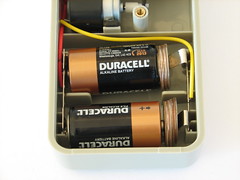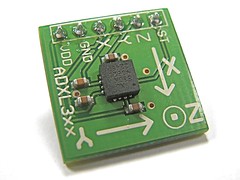
Klein bottles are an entertaining mathematical idea–a shape with no volume. A Klein bottle is basically a tube where the inside is connected to the outside. Making a Klein bottle in our 3D world requires a bit of cheating to work, by adding a hole in one of the walls of the tube to provide a place for an intersection.
The most common physical realization is a glass Klein bottle, which you can ogle and buy at Acme Klein Bottles. They also sell wonderful knit Klein bottle hats which can be bought with a matching mobius strip scarf. I was lucky enough to be given a set as a gift, and it is cozy and bright and wonderful. My only complaint is that the narrow neck of the Klein bottle makes it hard to pull it inside out (or right side out, since it is the same thing) to play with it.
I have found that the concept of a mobius strip is more understandable when you can hold it in your hands and turn it around and around, and I thought the same would be true with a Klein bottle, if only it were a little more flexible than my hat. With that in mind, here’s how to make a simple fabric Klein bottle you can play with from two sleeves of a worn out shirt. Continue reading Fabric Klein Bottle






















































